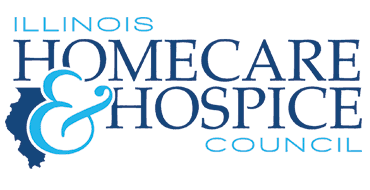Disrupting the Delivery of Care
Home health care continues to be in flux and agencies are scrambling to prepare for several forces which will disrupt their delivery of care. With 2020 underway, agencies are recognizing the urgent need to address the impact that PDGM, staff turnover, and patient adherence may have on their bottom line.
Preparing for PDGM
Under PDGM, reimbursements will be calculated differently. As a result, agencies are reviewing the referral partnerships they have cultivated vs. the types of patients in their care. Smart agencies have realigned their goals – better care, better outcomes, better margins – with institutional partners which will refer patients and help agencies obtain a higher reimbursement rate versus community sources.
Successful agencies are using data to prove they can deliver the best care – meaning, care that keeps the patients on track with their treatment vs. returning to the hospital – by incorporating virtual care in their workflows. By using virtual care technology and patients’ devices, home health agencies are able to continually engage patients during the episode of care and link the engagement levels to patient outcomes. This helps the agencies’ value propositions and ability to deliver on the referral partners’ goals of providing patient-centric yet cost-contained care.
Addressing the Staffing Shortage
For the first time in U.S. history, the nation’s older population segments will outnumber children, according to the U.S. Census Bureau. As they seek to age in place, baby boomers will need at-home care at a rate which exceeds the available and forecasted home healthcare workers. Given the expected demand for home health services, agency leaders are focused on addressing current and future staffing shortages while recruiting and retaining qualified staff team members.
Innovative agencies are using HIPAA-compliant communication platforms to better utilize current staff and deliver more care to more patients. Instead of spending most of the day behind the wheel, agency staff have increased their productivity by supplementing – or even replacing – in-person visits with virtual visits. Agency administrators are also emailing or texting timely messages to patients about their medication, upcoming appointments, condition management, and overall well-being. Technology is continuing to change how an agency’s clinicians work, thus attracting interest from clinicians at competing agencies or those at a crossroads in their nursing careers. The convenient options in providing care also enhances clinician satisfaction as staff appreciates the flexibility in providing care across a geography without needing to be “behind the wheel” for most of the shift. By improving staffing productivity, agencies are positioning themselves as the employer of choice in highly competitive regions.
Driving Patient Adherence
Improving patient adherence is critical for patient outcomes. According to a study on whether patient medication adherence is a risk factor for readmission, patients with low and intermediate adherence (combined) had readmission rates of 20% compared to a readmission rate of 9.3% for patients with high adherence within 30 days of discharge. To strengthen patient adherence and outcomes for all, home health agencies are turning to technology to provide ongoing condition-specific education and self-care motivation.
With virtual care, successfully home health agencies are using the dynamic nature of video, email, text, and SMS to reach patients via their devices. As a result, patients are receiving timely and thoughtful appointment reminders, medication updates, and healthcare messaging in a manner that reflects “how” and “when” they use technology on a daily basis. Patients better understand their role in self-care and also follow-through on the adherence guidelines, effectively reducing rehospitalizations while enhancing the quality of life.

